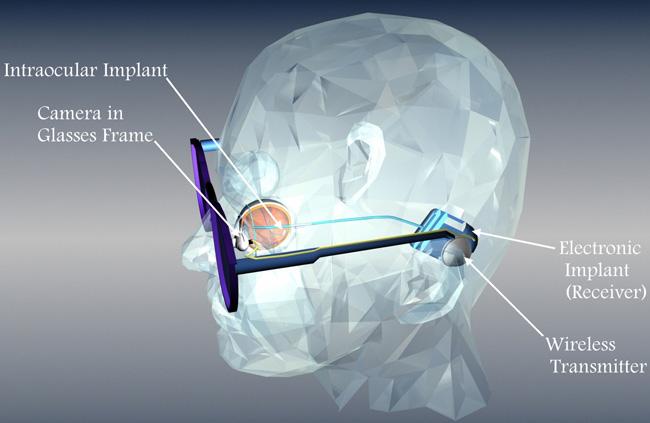Who doesn’t want the visually impaired people to have their sight back?
Fortunately, advancement in the field of medical technology has gradually made life a little more autonomous for people with special needs. Researchers of the University of Sydney have added colours to the dark world by designing an artificial eye system or Bionic eye called the ‘Phoenix 99 Bionic Eye’, to restore sight.
A bionic eye is an artificially designed eye created in hopes of mimicking the functions of a real-eye for those who have an impaired vision due to diseases of the retina, for example, retinitis pigmentosa or other degenerative retinal diseases. Though the image produced is not clear or perfect but it surely gives a sense of object ahead. Something is always better than nothing.
Also, similar to patients with cochlear implants, these patients eventually adapt to the use of this technology. The bionic eye uses a set of sensors, processors, transmitters and retinal chips to elicit visual perceptions in the brain.
In 2012, a prototype was designed, which was capable of giving patients a sense of distance by allowing them to see spots of light through the camera.
The Phoenix99 bionic eye uses neural stimulation technology. Unlike the prototype, it has quite an enhanced vision and is implantable.

The user has to wear a special pair of glasses. A tiny camera is attached on a pair of glasses which is meant to capture images. This camera is so tiny that it can fit on to the glass of the frame. The captured image is then sent to a tiny electronic chip or microprocessor. The job of a microprocessor is to process the image into an electrical signal which can then be sent to a receiver. The receiver is connected to a tiny retinal implant at the back of the eye via electrodes. These electrodes then interface with the surviving nerve tissues, sending visual signals to the brain. A final image of light and dark pattern is perceived. If the affected or blind eye doesn’t have a functional optic nerve, then devices can be used to bypass the damaged nerves in order to reach the brain. The formed pixelated images with outlines and edges facilitate mobility and help the blind to get more independent with the activities of daily living.
Although the process seems to have multiple steps, this actually happens in real-time and quickly enough to mimic the normal eye in providing a sense of vision.
The process of using the bionic eye technology requires a two to three hours long surgery to implant the bionic eye. After the surgery, the only visible sign of bionic eye implant is the small post-auricular disc which has to act as a transmitter of data to the device, which then delivers electrical impulses to the back of the eye.
Currently, the cost of the bionic eye is a major limitation. Also, as it is an artificial implant and not a natural alternative, it carries its own reservations regarding health and safety.
The Future prospects of this technology are to improve the quality and sharpness of the final image. Scientists are also converging their efforts to bypass the retina so that signals can be directly sent to the brain. This would help those who have a defective or damaged retina.
References
Bionic eye project has sights on human trials. (2018, December 13). Retrieved from University of Sydney: https://sydney.edu.au/news-opinion/news/2018/12/13/bionic-eye-project-has-sights-on-human-trials.html
DOCKRILL, P. (2016, January 25). Australian Scientists to Begin Trialling Fully Implantable Bionic Eye. Retrieved from Science Alert: https://www.sciencealert.com/australian-scientists-to-begin-trialling-fully-implantable-bionic-eye
Khatri, P. (2017, November 16). Bionic Eye. Retrieved from Circuit Digest: https://circuitdigest.com/article/bionic-eye
Umali, T. (2018, December 14 ). Bionic Eye to restore sense of sight. Retrieved from Open Gov: https://www.opengovasia.com/bionic-eye-to-restore-sense-of-sight/




